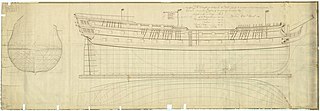
HMS Colossus was a 74-gun third-rate ship of the line of the Royal Navy. She was launched at Gravesend on 4 April 1787 and lost on 10 December 1798. During her years of service she participated in the Battle of Groix, the Battle of Cape St Vincent, and the Battle of the Nile. While carrying wounded from the latter, she was wrecked at the Isles of Scilly. The wreck is a Protected Wreck managed by Historic England.

The British Sub-Aqua Club or BSAC has been recognised since 1954 by UK Sport as the national governing body of recreational diving in the United Kingdom.

The Commander-in-Chief Fleet (CINCFLEET) was the admiral responsible for the operations of the ships, submarines and aircraft of the British Royal Navy from 1971 until April 2012. The post was subordinate to the First Sea Lord, the professional head of the Naval Service. In its last years, as the Navy shrank, more administrative responsibilities were added.

Association was a 90-gun second-rate ship of the line of the Royal Navy, launched at Portsmouth Dockyard in 1697. She served with distinction at the capture of Gibraltar, and was lost in 1707 by grounding on the Isles of Scilly in the greatest maritime disaster of the age. The wreck is a Protected Wreck managed by Historic England.
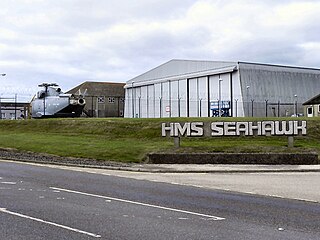
Royal Naval Air Station Culdrose is a Royal Navy airbase near Helston on the Lizard Peninsula of Cornwall UK, and is one of the largest helicopter bases in Europe. Its main role is serving the Fleet Air Arm's front line AgustaWestland Merlin helicopter squadrons.

An aircraft handler is a member of the Aircraft Handling branch in the Royal Navy of the British Armed Forces. Aircraft Handlers are responsible for the safe movement, launching and recovering (landing) of all aircraft on board ships within the Royal Navy and some of the Royal Fleet Auxiliary. They are also responsible for aircraft crash rescue and fire fighting duties on board Royal Navy ships and at Royal Naval Air Stations. The Aircraft Handling branch of the Fleet Air Arm in the Royal Navy was formed in 1945. Beforehand the duties of Aircraft Handlers were performed by members of other branches of the Navy, many of whom transferred to the new branch upon its formation.
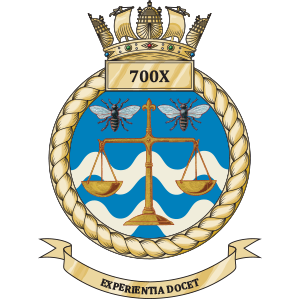
700 Naval Air Squadron is an experimental test squadron in the Royal Navy’s Fleet Air Arm.
HMS Puttenham(M2784) was a Ham-class inshore minesweeper of the Royal Navy. She was launched in 1956 and entered service in 1958. The 93 ships of the Ham class had names chosen from villages ending in -ham. The minesweeper was named after Puttenham.
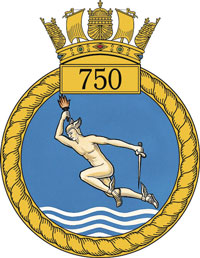
The Royal Navy Observer School grew out of HM Naval Seaplane Training School at RNAS Lee-on-Solent as a result of a series of changes of identity and parent unit. From 1918 until 1939 the Royal Air Force was responsible for naval aviation, including training and provision of aircrew to the Royal Navy. With the return of naval aviation to the Royal Navy on 24 May 1939, the Observer School was established as 750 Naval Air Squadron of the Fleet Air Arm. During World War II the squadron moved to Trinidad to continue training aircrew. It was temporarily disbanded in October 1945. The squadron reformed in 1952 and is currently based at RNAS Culdrose, where it trains approximately 30 Royal Navy observers every year.

Tresco Abbey Gardens are located on the island of Tresco in the Isles of Scilly, United Kingdom. The 17 acre gardens were established by the nineteenth-century proprietor of the islands, Augustus Smith, originally as a private garden within the grounds of the home he designed and built. The gardens are designated at Grade I in the Register of Historic Parks and Gardens.

815 Naval Air Squadron is a Royal Navy Fleet Air Arm squadron flying the AgustaWestland Wildcat HMA.2 helicopter and is the Navy's front line Wildcat Naval Air Squadron. The squadron is based at RNAS Yeovilton in Somerset. The squadron is capable of carrying out multiple roles such as: counter-narcotics, anti-piracy, Above Surface Warfare (ASW), search and rescue, disaster relief and flying and engineering training. In the early 2000s, the Navy said that the squadron was largest helicopter squadron in Europe.

The Fleet Requirements and Air Direction Unit (FRADU) was a unit of the Royal Navy's Fleet Air Arm operated by the contractor Serco Defence and Aerospace. It was established in 1972. It was most recently equipped with 13 BAE Systems Hawk T1 advanced jet trainer aircraft on lease to the Royal Navy from the Royal Air Force, based at RNAS Culdrose in Cornwall. Two of these aircraft were permanently detached to Naval Flying Standards Flight at RNAS Yeovilton where they are flown by RN pilots, but maintained by Serco engineers.
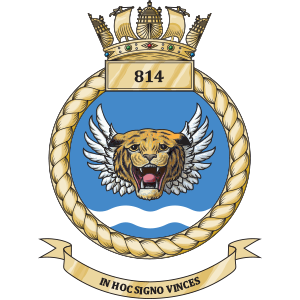
814 Naval Air Squadron or 814 NAS, nicknamed the Flying Tigers, is a squadron of the Royal Navy Fleet Air Arm. It is currently equipped with the AgustaWestland Merlin HM2 anti-submarine warfare helicopter and is based at Royal Naval Air Station (RNAS) Culdrose in Cornwall. The squadron was formed in December 1938 and has been disbanded and reformed several times.

The Scilly naval disaster of 1707 was the loss of four warships of a Royal Navy fleet off the Isles of Scilly in severe weather on 22 October 1707. Between 1,400 and 2,000 sailors lost their lives aboard the wrecked vessels, making the incident one of the worst maritime disasters in British naval history. The disaster has been attributed to a combination of factors, including the navigators' inability to accurately calculate their positions, errors in the available charts and pilot books, and inadequate compasses.

The Western Rocks are a group of uninhabited skerries and rocks in the south–western part of the Isles of Scilly, United Kingdom, and are renowned for the numerous shipwrecks in the area and the nearby Bishop Rock lighthouse. In 1971, the rocks and islands were designated a Site of Special Scientific Interest for their breeding sea birds. Landing on the islands is both difficult and discouraged and there are few published records of visits by naturalists.
Richard James Vincent Larn, OBE is a retired Chief Petty Officer in the Royal Navy, a businessman and maritime history writer who is widely regarded as one of Britain's leading historic shipwreck experts.
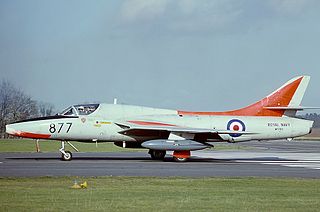
759 Naval Air Squadron was a Naval Air Squadron of the Royal Navy's Fleet Air Arm. It was created on November 1st, 1939 and was disbanded on December 24, 1969. It was initially intended as a Telegraphist Air Gunner Training Squadron but became a Fighter School and Pool Squadron in 1939, at RNAS Eastleigh. It operated out of RNAS Yeovilton from 1940 to 1946, as part of the Naval Air Fighter School. In 1943 a detachment operated out of RNAS Angle, working with 794 NAS and known as the Naval Air Firing Unit. It was again the Naval Air Fighter School upon reformation in 1951 and disbandment in 1954, firstly at RNAS Culdrose and then moving to RNAS Lossiemouth, in 1953. The squadron reformed again, this time at RNAS Brawdy in 1963, as the Naval Advanced Flying Training School, before finally disbanding in 1969.
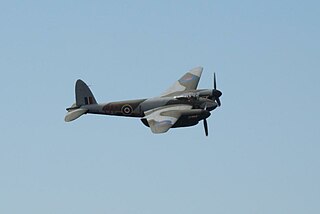
762 Naval Air Squadron was a Naval Air Squadron of the Royal Navy's Fleet Air Arm. It formed at RNAS Yeovilton in March 1942 as an Advanced Flying Training School. Almost immediately the squadron relocated to RNAS St Merryn, but before the end of the year, it was back at Yeovilton. 762 NAS disbanded nine months later.















